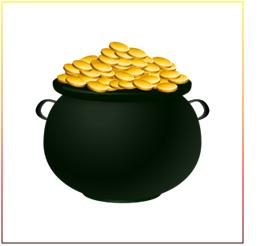As compared to currency, gold is the real wealth. Many scholars have pointed out the benefits of gold in fighting inflation. In times of uncertainty, people turn to gold to hedge their savings against financial disasters. The upward rally of gold in the past few decades is a testament to the fact that people still consider gold to be the best investment vehicle in dire economic times.
But does it really deserve this title? Is gold really the perfect choice for investors in times of economic uncertainty?
In the following paragraphs, we will explore why gold is the perfect option for investors to hedge their savings. We will find out the hedging ability of gold and as to how it protects savings of investors against the diminishing value of paper currency.
Gold as a Hedge against Inflation
Gold has certain distinct values that make it the perfect investment option for investors especially in times of economic uncertainties. Generally, gold trading provides stable returns to the investors. In the last two decades, for instance, the return of gold has been effective in beating out inflation. In contrast to the paper currency, gold has not only retained its value but also experienced an increase.
Due to inflation, the paper currency loses its value with the passage of time. This becomes clear when you compare the purchasing power of dollar today with what it was three decades ago.
In 1984, the average gold price was about $365 per ounce. Fast forward to May 2014, and the price of gold stood at $1,290 per ounce. That’s a phenomenal increase of 253% in just three decades. If we account for inflation, the value of $365 is equivalent to about $795 today. This means that the value of gold has seen a 62% increase in value. Clearly, the real value of gold has not only matched the inflation rate but also exceeded to a great extent.
Although the price of gold can experience some extreme swings in the short term, in the long term the value of gold generally sees an upward trend. For example, during the great depression it was possible to buy a suit of expensive clothes for an ounce of gold. The same is true even today.
Relative to gold, the paper currencies lose their purchasing power with time. This is due to the fact that an increase in prices of goods decreases the value of the currency. Gold, on the other hand, not only maintains its value but increases with the passage of time.
Final Verdict
Gold neither pays dividends, nor interests. Despite of this fact there is a general increase in the value of gold that protects the saving of investor. Gold is an ideal diversifier for a stock portfolio. It is one of the most negatively correlated assets to stocks.
That is why a perfectly balanced portfolio should consist of gold stocks, gold ETFs, and valuable metals. This, in effect, hedges the investment portfolio against inflation and extreme swings of the conventional stock market investment.








